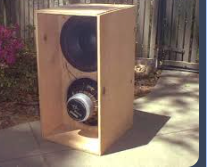Hi all,
@randhir_s and myself, both noobs as far as subwoofer goes and are planning to get a subwoofer built through one of few builders that Randhir has managed to locate. Both of us reside in Pune. Usage will be for both HT and stereo.
We have questions
1. Should we go for ported or sealed?
2. Is very low frequency extension good (20 Hz and below)?
3. One or two subwoofers?
4. 10" or 12" or larger (our music room sizes are probably roughly around 150 to 200 sq ft)
5. How much impact the driver has on the quality? So IWAI, Pioneer or SB acoustics?
6. Class ABCDEFG (what kind of amp) to drive the driver
7. Crossover details
8. Any recommended builder?
These are the links to some drivers that we have shortlisted (without any criteria). Please take both of us total noobs. If there are better ones, please suggest the same.
1. https://pioneer-india.in/buy/car-entertainment-car-subwoofers-champion-series/ts-w1212s4/
2. https://sbacoustics.com/product/12in-sb34swpl76-4/
3. https://iwaispeakers.com/product-detail/12-long-throw-subwoofer-4ω-200w/
@randhir_s and myself, both noobs as far as subwoofer goes and are planning to get a subwoofer built through one of few builders that Randhir has managed to locate. Both of us reside in Pune. Usage will be for both HT and stereo.
We have questions
1. Should we go for ported or sealed?
2. Is very low frequency extension good (20 Hz and below)?
3. One or two subwoofers?
4. 10" or 12" or larger (our music room sizes are probably roughly around 150 to 200 sq ft)
5. How much impact the driver has on the quality? So IWAI, Pioneer or SB acoustics?
6. Class ABCDEFG (what kind of amp) to drive the driver
7. Crossover details
8. Any recommended builder?
These are the links to some drivers that we have shortlisted (without any criteria). Please take both of us total noobs. If there are better ones, please suggest the same.
1. https://pioneer-india.in/buy/car-entertainment-car-subwoofers-champion-series/ts-w1212s4/
2. https://sbacoustics.com/product/12in-sb34swpl76-4/
3. https://iwaispeakers.com/product-detail/12-long-throw-subwoofer-4ω-200w/
Last edited:






